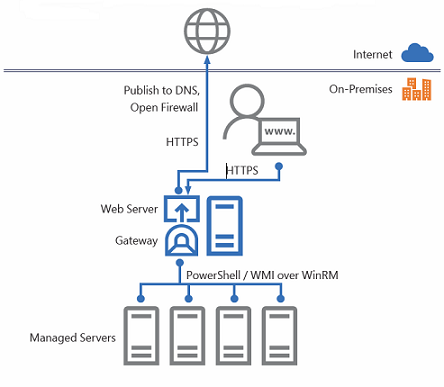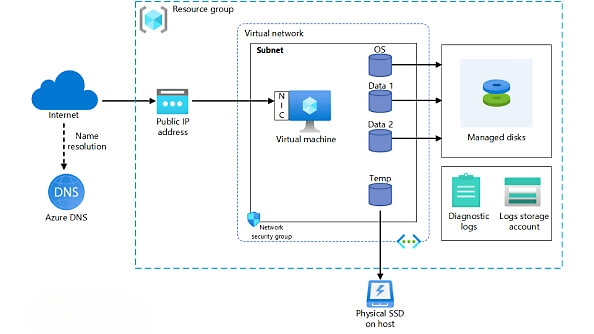Windows Server Solutions for Medical Staff and Construction Companies
Category: Server Solution


Project Overview
This project involves the deployment and configuration of comprehensive Windows Server solutions for medical staff and construction companies. The goal is to provide robust, scalable, and secure server environments tailored to the specific needs of each industry. These solutions encompass Active Directory (AD), Domain Controller (DC), File Services (FS), Remote Desktop Services (RDS), and more.
Project Phases
Phase 1: Initial Assessment and Planning
- Requirement Analysis
- Stakeholder Meetings : Conduct meetings with key stakeholders to understand their requirements, existing infrastructure, and specific needs.
- Current Infrastructure Review : Assess the existing IT infrastructure, including hardware, network, and software systems.
- Project Scope Definition
- Scope and Objectives : Define the project scope, objectives, timelines, and responsibilities.
- Compliance and Security : Ensure compliance with relevant industry regulations and security standards.
Phase 2: Infrastructure Preparation
- Hardware and Software Requirements
- Server Procurement : Procure and configure physical or virtual servers meeting the requirements for Windows Server roles and features.
- Network Configuration : Ensure network readiness, including DNS, firewall settings, and network segmentation.
- Active Directory Preparation
- Schema Extension : Extend the Active Directory schema if necessary.
- Domain Preparation : Prepare the Active Directory domain and organizational units (OUs) for new server roles.
- Backup and Recovery Planning
- Backup Strategy : Develop a comprehensive backup and disaster recovery strategy to ensure data integrity and recoverability.
Phase 3: Windows Server Installation and Configuration
- Server Roles and Features Installation
- Active Directory Domain Services (AD DS) : Install and configure AD DS to establish the domain and manage user access.
- Domain Controller : Set up one or more domain controllers for authentication and directory services.
- File Services : Install and configure file services for secure and efficient file sharing and storage.
- Remote Desktop Services (RDS) : Deploy RDS to enable remote access to applications and desktops.
- Additional Server Roles
- DNS and DHCP : Configure DNS and DHCP services for network management and IP address assignment.
- Group Policy Management : Implement Group Policies to enforce security settings and manage user environments.
Phase 4: Security and Compliance
- Security Configuration
- Firewall and Network Security : Configure firewalls and network security settings to protect server resources.
- Access Control : Implement Role-Based Access Control (RBAC) to restrict access based on user roles and responsibilities.
- Compliance Measures
- Regulatory Compliance : Ensure configurations adhere to industry-specific regulations such as HIPAA for medical staff.
- Audit and Monitoring : Set up auditing and monitoring tools to track user activities and system changes.
Phase 5: Data Migration and User Management
- Data Migration
- Data Transfer : Plan and execute data migration from existing systems to the new Windows Server environment.
- Data Validation : Verify the integrity and completeness of migrated data.
- User and Group Management
- User Account Creation : Create and configure user accounts and groups in Active Directory.
- Mailbox and File Permissions : Set up mailbox and file permissions according to user roles and access requirements.
Phase 6: Testing and Validation
- Functionality Testing
- Service Validation : Test all server roles and services to ensure they are functioning as expected.
- User Access : Verify user access to shared resources, applications, and remote desktops.
- Performance Testing
- Load Testing : Perform load testing to ensure the server environment can handle the expected user and data load.
- Security Testing : Conduct security testing to identify and address potential vulnerabilities.
Phase 7: User Training and Documentation
- Training Sessions
- IT Staff Training : Conduct training sessions for IT staff on managing and maintaining the Windows Server environment.
- End-User Training : Provide training for end-users on accessing and using new server resources.
- Documentation
- Configuration Documentation : Document all server configurations and settings.
- User Guides : Provide user guides and troubleshooting documentation for common tasks and issues.
Phase 8: Go-Live and Post-Implementation Support
- Go-Live Preparation
- Final Checks : Perform final system checks and prepare for go-live.
- Communication : Inform users of the transition schedule and provide support contacts.
- Go-Live Execution
- Migration : Migrate user data and switch to the new Windows Server environment.
- Monitoring : Monitor the system closely for any issues during the transition.
- Post-Implementation Support
- Ongoing Support : Provide ongoing support and address any issues that arise post-implementation.
- System Monitoring : Implement continuous monitoring for performance and security.
Key Considerations
- Data Privacy and Security : Ensure all configurations adhere to data privacy and security standards, especially for sensitive medical data.
- User Experience : Minimize disruption during the transition and provide comprehensive support during the go-live phase.
- Scalability : Configure the system to scale with the growth of the companies.
- Compliance : Maintain compliance with industry-specific regulations and standards.
By following these steps, we ensure a successful deployment of comprehensive Windows Server solutions tailored to the needs of medical staff and construction companies, providing a secure, reliable, and scalable server environment.



